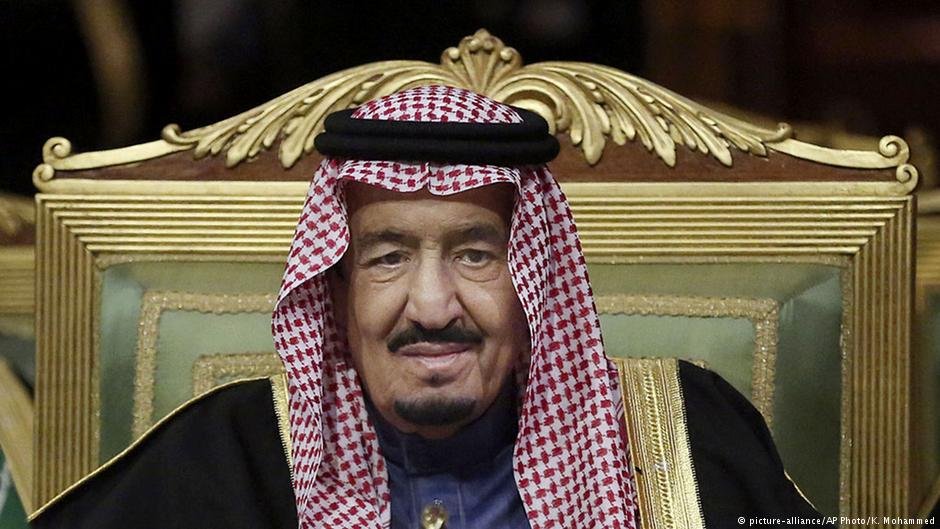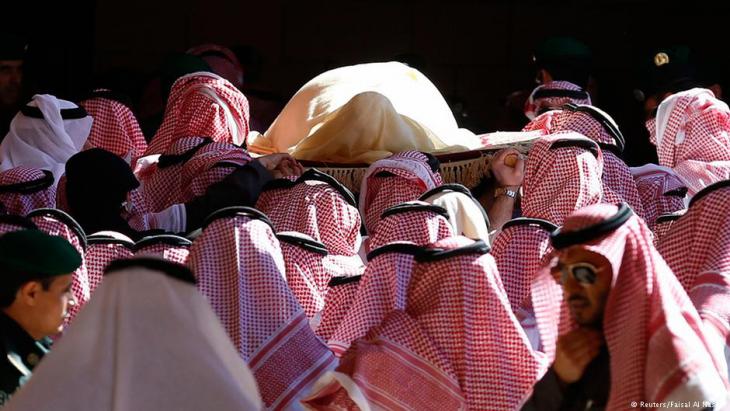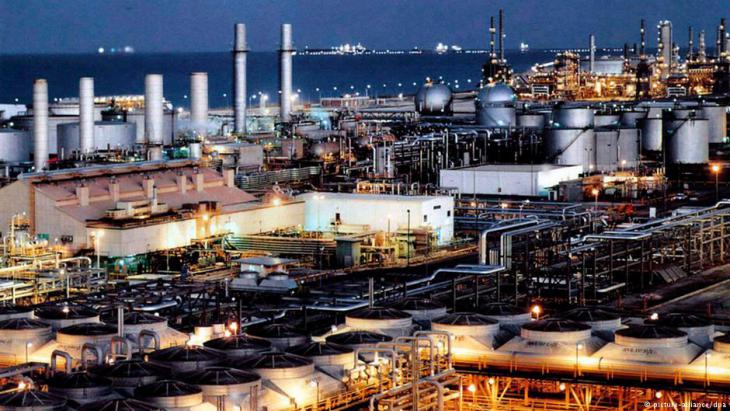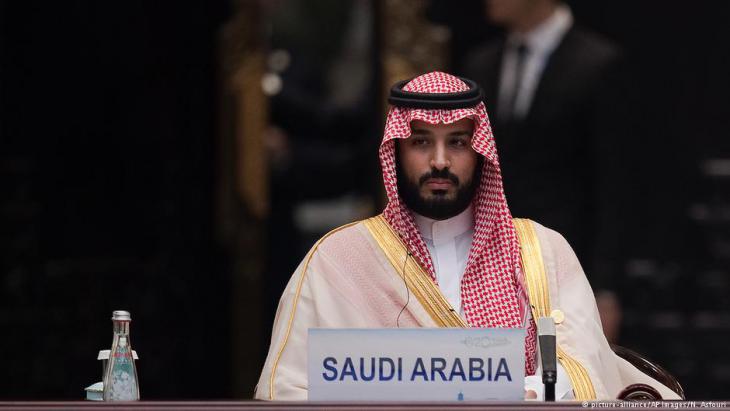Salman the Powerful

Since the death of the first king of Saudi Arabia, Abdulaziz Al Saud, in the year 1953, the nation has been successively governed by one of his more than 30 sons. Most of them founded their own families, of which several have grown to become key power centres within the country over the years.
The richest and most powerful families shared control of the most important ministries and other state institutions among themselves. And so it was that individual political portfolios such as, for example, domestic security, defence, but also individual foreign policy areas, could often be clearly assigned to the jurisdiction of particular families.
Should the King or an important prince want to extend the influence of his family, he would always have to ensure that other branches of the royal family were placated with suitable posts or financial compensation. This perpetual equilibration of power structures within the royal family, which also includes the distribution of oil revenues, is to this day one of the most important factors in the stability of Al Saud rule.
Handful of princes hold the balance of power
Since 2011 in particular, the advancing age of the sons of King Abdulaziz has led to an increased power concentration among a small number of princes. In October 2011, the elderly Prince Sultan bin Abdulaziz – one of the most powerful princes in the Saudi royal family – died after a long illness. With Sultan, who had for decades served as defence minister, Crown Prince and the person responsible for Saudi Arabia's policy on Yemen, the Gulf nation also lost one of its key political power centres.

None of Sultan′s sons were able to fill the gap, which is why the family lost influence following his death. The powerful interior minister and Crown Prince Nayef bin Abdulaziz died around eight months later. But his son Mohamed bin Nayef, a man who enjoys great respect in Saudi Arabia and also from the U.S., a key ally, was able to maintain his position of power and that of his family. He presides over the interior ministry, which has a finger in every pie, leads the Saudi Council of Political and Security Affairs and since April 2015, has also been the official successor to the throne. His brother Saud bin Nayef has been governor of the key Eastern Province, home to most of the nation's oil reserves and a region where the Shia minority is particularly strong, since 2013.
A second power centre disappeared in January 2015, with the death of King Abdullah bin Abdulaziz. Under the rule of the new King Salman bin Abdulaziz, who is still in power to this day, Abdullah's family suffered a significant loss of power. The little influence that remains is primarily exerted by Abdullah's son, Prince Miteb bin Abdullah, who is head of the National Guard.
Another son, Abdulaziz bin Abdullah, is deputy foreign minister. There were also major changes at the helm of the foreign ministry. Until 2015, it was led by Saud bin Faisal bin Abdulaziz, a son of the former King Faisal.
But after the death of Saud bin Faisal in July 2015, King Salman filled the post of foreign minister with Adel Al Jubeir, a career diplomat who was not a member of the royal family. This meant that the Faisal family was the third power centre to lose a significant amount of influence in Saudi Arabia. It concentrated the lion's share of political power in the families of Nayef and King Salman.
Vision 2030 – a risky programme of reforms
Since the accession of King Salman, however, his family has also been systematically consolidating its political influence to the detriment of the Nayef family. The best-known son of the King, Mohammed bin Salman (MbS), is the 31-year-old deputy Crown Prince, defence minister, chairman of the Council of Economic and Development Affairs and a member of the Council of Political and Security Affairs. Saudi media have associated him closely with Saudi Arabia's military intervention in Yemen.

His prestige project is also Vision 2030, the extremely ambitious reform programme for Saudi Arabia's oil-dependent economy. This coverage has presented MbS as a courageous and fast-acting figure, who could perhaps even threaten Mohamed bin Nayef's position as first in line to the throne. But issues with the Yemen campaign are now rubbing off on him. The same goes for Vision 2030. The reform package afflicts Saudis with uncomfortable austerity measures that could, in the best case scenario, have positive effects on the labour market in the mid- to long-term. In the worst case, the project could fail totally.
From the second half of 2016, against this backdrop of circumstances, Mohamed bin Nayef – who had barely shown his face in public in preceding months – made more frequent public appearances. Until recently, observers in Riyadh emphasised that he had again made inroads into the influence of MbS. This makes the decisions issued by King Salman on 22 April all the more significant.
These included the appointment of a brother of MbS, Khalid bin Salman, to the post of new Saudi ambassador to the U.S. This further concentrates relations with the nation's most important security guarantee in the hands of the Salman family. This is because as a non-member of the royal family, the Saudi foreign minister – who was ambassador to the U.S. between 2007 and 2015 – is more closely associated with the political line of King Salman and MbS, than was the case with his predecessor Prince Saud bin Faisal.
Increased power to the Salman family
The position of the Salman family is consolidated by a series of other personnel decisions. For example, the spokesman for the Saudi-led military alliance in Yemen was promoted to deputy head of the intelligence agency, while the head of joint special operations there became commander-in-chief of the Saudi ground forces. Both worked closely together with MbS in the Yemen conflict.
Another notable decision is that of all people, a Salman family member, in the form of Ahmed bin Fahd bin Salman is now deputy to the Nayef family governor of the Eastern Province. Another brother of MbS, Abdulaziz bin Salman, was promoted to the post of state minister for energy affairs.

In addition to these personnel decisions, a new committee was set up, a kind of national security council. Its exact areas of responsibility are still nebulous. What is clear however, is that this body is under the control of the palace. It is unclear how this committee should be differentiated from the Council of Political and Security Affairs, led by Mohamed bin Nayef.
In view of the power-political developments outlined thus far, one should not however rule out that the institution is aimed at – through the creation of parallel structures – further weakening Mohamed bin Nayef, whose core responsibility to date has been domestic security.
All these decisions further concentrate political power in Saudi Arabia in the hands of the Salman branch of the royal family, even more than was previously the case. In view of the material cutbacks imposed on most of the population associated with the Vision 2030 programme (as long as these continue to be realised), the Salmans are taking a big political risk. After all, they are simultaneously creating tensions both with other branches of the royal family and with the population.
In a bid to reduce levels of resentment, the changes outlined were also accompanied by further measures: namely the promotion of many mainly young princes from other branches of the royal family to deputy governor or governor positions and financial gifts to civil servants.
Matthias Sailer
© Qantara.de 2017
Translated from the German by Nina Coon
Matthias Sailer is a doctoral fellow in the Middle East and Africa Division of the German Institute for International and Security Affairs (SWP).